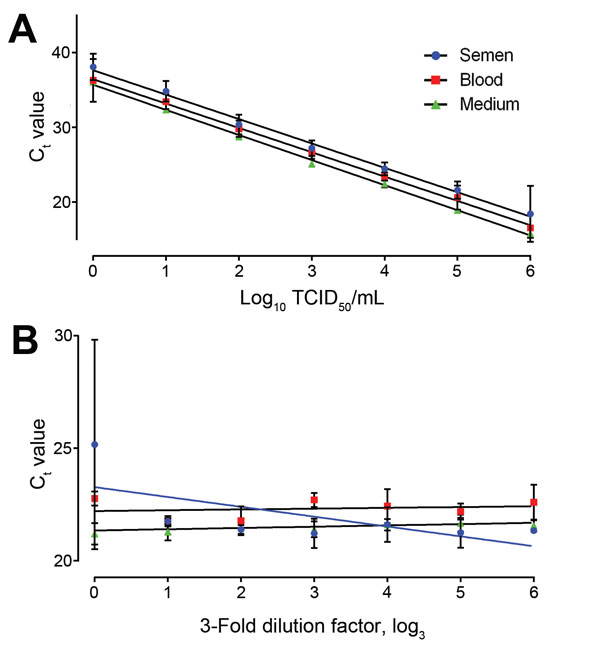Volume 22, Number 2—February 2016
Dispatch
Ebola Virus Persistence in Semen Ex Vivo
Figure 1

Figure 1. A) Standard curves of Ebola virus spiked into 3 matrices: semen, blood, and tissue culture medium. Samples were analyzed on the basis of 5 biologic replicates. PCR efficiency was from 98% in cell culture medium, 102% in semen, and 103% in blood. Analysis of covariance showed no significant difference (p<0.05) between the slopes of the linear regressions of blood and semen. B) Matrix dilution in which semen, blood, and tissue culture medium were 3-fold serially diluted in sterile physiologic saline solution and spiked with 104 TCID50/mL Ebola virus. The slopes for blood and medium did not differ significantly from 0. If the semen sample data are analyzed disregarding the undiluted sample, the resulting slope also does not differ significantly from 0. Ct, cycle threshold; TCID50, 50% tissue culture infectious dose. Error bars represent the mean ± SEM of 5 quantitative PCR analyses.